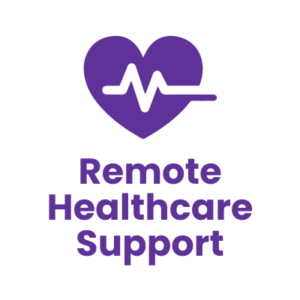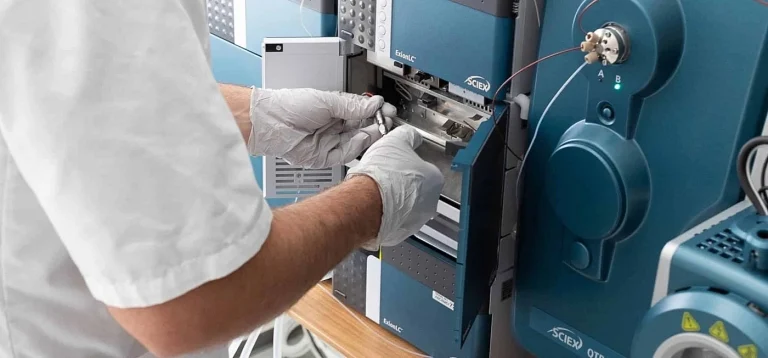The Client
A multifaceted healthcare group with divisions in hospital-based physician staffing, ambulatory surgery and home care manages the majority of its 30 million patient interactions each year through Salesforce.
The company is an industry innovator in solutions to reduce care costs and improve patient satisfaction. Its ambulatory surgery division features close to 300 locations across the country, and its growing home healthcare, hospice, and infusion therapy division operates in nine states with nearly 4,000 members of staff.
SightCall worked closely with its physician staffing arm, the largest of its kind in the United States.
The Challenge
Like others in the healthcare industry, the company’s operations were placed under unique and unprecedented strain with the onset of the COVID-19 pandemic. Early on, experts were still learning how the virus could be transmitted and considering the most effective safety measures. But it was immediately clear the healthcare group needed a technological solution to create a safe airspace between patients and providers.
The client called its vision E-PPE, or electronic personal protective equipment. The goal was for the physician to be able to achieve social distancing for their and their patients’ protection by completing as much work as possible remotely, which would also respect the strain placed on medical and personal protective equipment by the pandemic.
The solution needed to be customizable to its existing Salesforce platform and quickly mobilized for large-scale use, as well as feature high-definition image quality to allow physicians to work remotely with minimal disruption. The company also expected an enterprise-grade tool with full HIPAA and data regulation compliance.
The Solution
The client chose SightCall for its E-PPE, employing it through Salesforce Health Cloud. Its healthcare professionals are working remotely to evaluate patients, check vitals, study diagnostic scans and make important care decisions — all without clinicians physically going into a patient room. Physicians, patients and their family members are able to collaborate and discuss care in a safe, physically distanced way that does not compromise the quality of patient care.
Patients’ own devices can be used to launch SightCall remote sessions, with no additional equipment or tools required. Its versatility is such that physicians use it to make virtual rounds throughout hospital wards, employing several system features.
With remote zoom, the call camera can be strategically positioned to view the monitoring system showing patient vitals. Physicians then take screenshots of vital sign information with HD photos, and using the Smart Optical Character Recognition tool, feed the information back to patient charts on Salesforce, with no manual data entry required.
The same HD picture quality and reliable video, regardless of connectivity and network conditions, made physicians trust SightCall for tele-triage in their emergency departments. This process facilitates efforts to separate EDs between general acute care and COVID-19-suspected patient populations for everyone’s safety. In hospitals with a limited number of intensive care beds, SightCall is used by physicians and medical teams to create overflow ICUs within the ED, with initial assessments and facility rounds performed through the same remote calls.
For the most serious cases in palliative care, multi-party virtual calls can bring the patient on video with a nurse and family members so they can talk to the physician and make decisions face-to-face. In times where the COVID-19 patient is unresponsive or in a medically induced coma, the physician can initiate a call with no interaction necessary from the patient.
Underscoring these capabilities is high compatibility with data protection regulation, such as GDPR and CCPA, as well as HIPAA. SightCall’s HIPAA compliance is ensured by end-to-end encryption of data, multi-layered access control for staff, admin and agents, code protection of virtual meetings and mechanisms to authenticate protected patient information transmitted over the platform, with no private health data stored by SightCall.
The Results
Since launching SightCall at the height of the COVID-19 pandemic, the client’s physicians have performed more than 400,000 total telehealth calls. The number is split almost equally in half between virtual health visits in the acute setting, such as emergency departments, ICUs and ambulatory surgery centers, and virtual office visits.
“The fact that we found a tool that can be used on patient devices is a tremendous help to these hospitals,” said the client’s chief executive officer. “As we know, they are already lacking in access to equipment. SightCall gives them the predictability that between 70% and 80% of patients have their own devices, which can be used for treatment, so the hospital can readily backfill the other 20% to 30%.”
For those patients without devices, the client backfills by attaching tablets to the same kind of carts that would hold an IV drip and sending these automated carts to perform the virtual rounds.
Interestingly, the client reported hospitals that used telehealth calls more than others observed substantial increases in patient satisfaction rates and willingness to recommend the facilities.
“That’s a very promising sign,” shared one of the client’s IT directors. “Not only are patients pleasantly surprised about how seamless the virtual experience is, but also they can see the positive transformation of care for themselves.”
One of the client’s emergency physicians recalls how invaluable SightCall was in triaging one particular patient in the early months of the pandemic.
“We virtually triaged a patient who came in complaining of chest discomfort, and one of the diagnostics we ran was a chest X-ray,” she said. “When I remotely viewed the X-ray, I was able to determine pretty quickly that the patient displayed COVID-19 symptoms — and this was before their test came back.”
The patient was quickly isolated, mitigating contact between them and their providers.
SightCall enables such fast and accurate decision making, one director of emergency medicine agreed, giving an unequivocal diagnosis.
“Your tool has allowed me to keep my team from getting sick and dying,” he said.



